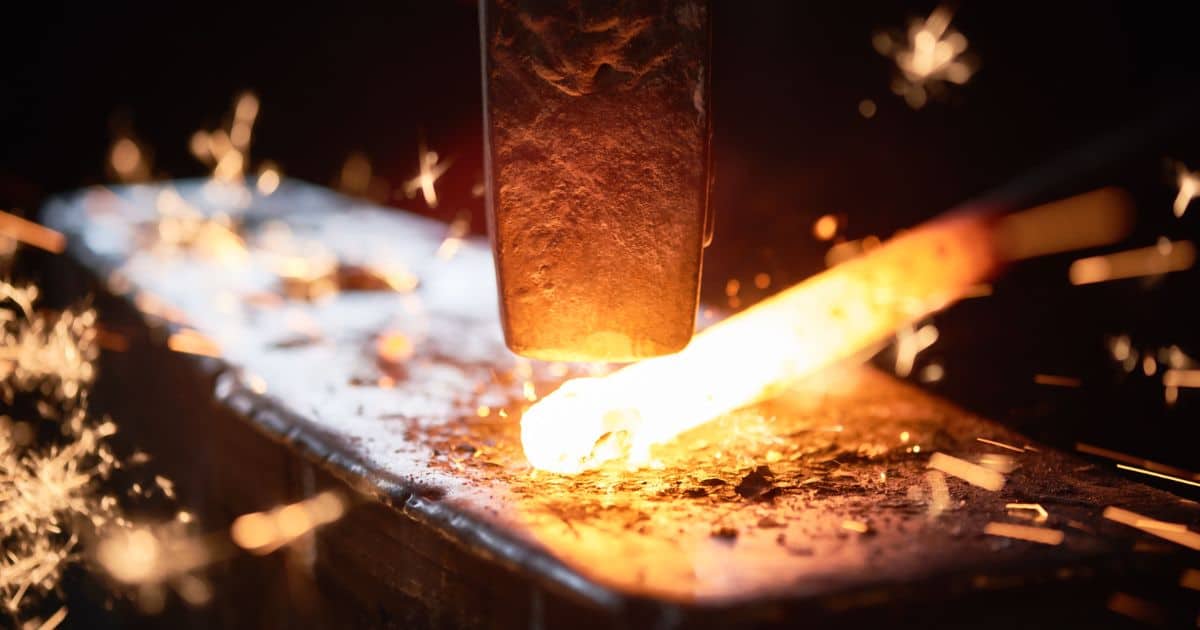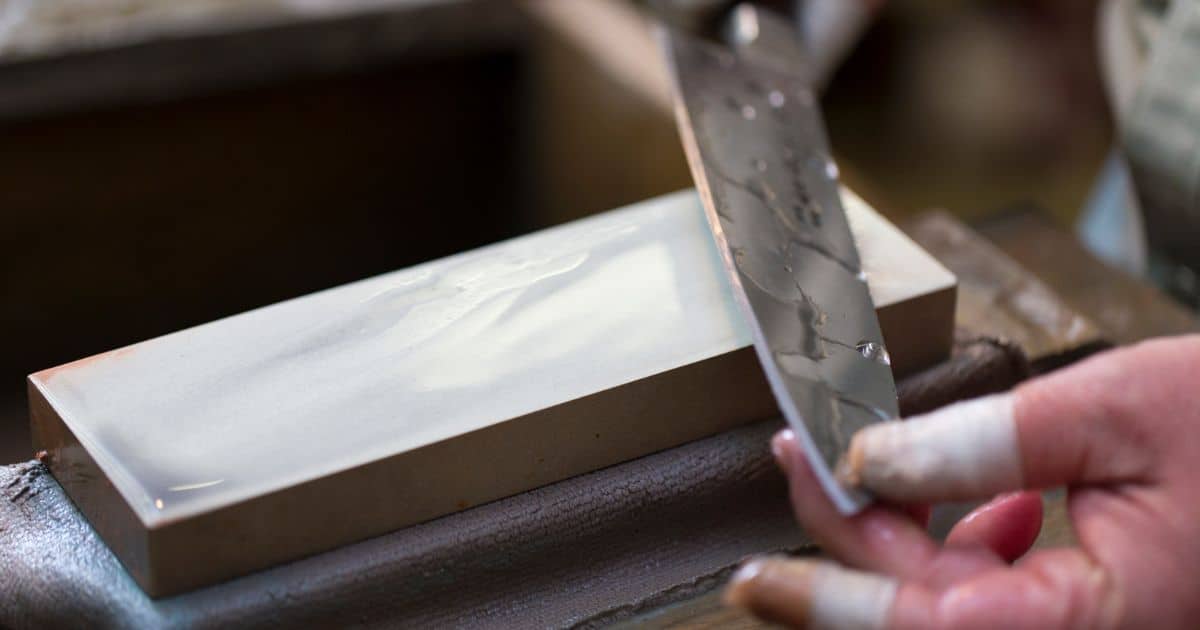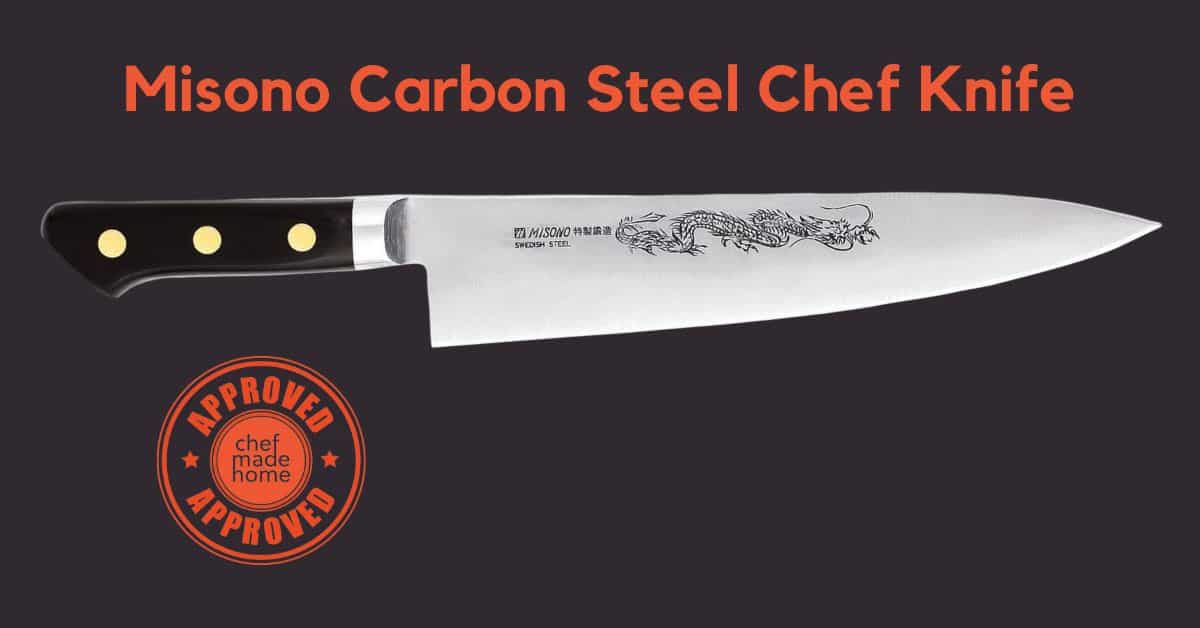Picture this: you’re in the kitchen, excitedly preparing to slice into a succulent, perfectly cooked steak. You reach for your trusty knife, only to find that it’s as dull as a butter knife on a diet. Don’t let this culinary tragedy happen to you, dear reader!
Enter the world of carbon steel knives, where sharpness reigns supreme and slicing is a breeze.
In this article, we’ll delve into the nitty-gritty of carbon steel knives and answer some burning questions you might have:
Is carbon steel good for knives?
What are the pros and cons of carbon steel knives?
Which type of carbon steel is the best for knives?
What does high carbon steel mean for a knife?
How do carbon steel knives compare to stainless steel knives?
So, strap on your apron, and let’s embark on this culinary adventure together!
20% off first coffee subscription order with code COFFEECLUB20
Carbon Steel Kitchen Knives: The Basics
Alright buddy, let me give you the lowdown on carbon steel knives. Imagine steel as a family, and carbon steel is that cool cousin with an extra bit of “oomph.” Basically, carbon steel is steel that has more carbon in it than your regular steel – we’re talking around 0.2% to 2.1% by weight.
Now, there’s this thing called high carbon steel knives. Picture them as carbon steel’s cooler, more refined sibling. These babies have even more carbon in them, usually somewhere between 0.6% and 1.0% more. Trust me, that extra carbon makes a world of difference for your knife game.
So, you might be asking, “Why do I even care about carbon in my knives?” Well, my friend, carbon is like the secret sauce that makes a knife amazing. It’s what helps the knife stay sharp, strong, and ready for action. The more carbon you’ve got, the better the knife will be at cutting stuff like a champ. But, just like with everything in life, there’s a catch – which we’ll get to in a bit.
Pros of Carbon Steel Knives
Let me tell you, my friend, carbon steel knives have some serious perks. Here’s what makes them so awesome:
Sharpness: These knives are razor-sharp right out of the box. Seriously, they could give a samurai sword a run for its money. They’re perfect for precision cuts, making your cooking experience a breeze.
Edge retention: Carbon steel knives hold their edge for a long time. That means less time spent sharpening and more time showing off your knife skills in the kitchen. Who wouldn’t want that?
Easy to sharpen: When the time does come to sharpen your knife (which won’t be too often), you’ll find it’s a piece of cake. The carbon steel responds really well to sharpening, so you’ll have it back to its former glory in no time.
Affordability: Carbon steel knives are often more budget-friendly than their stainless steel cousins. So, not only will you have an amazing knife, but you’ll also save some cash. Win-win!
Cons of Carbon Steel Knives
Alright, it’s time to spill the beans on the not-so-great side of carbon steel knives. Here’s what you should know:
Susceptibility to rust: Carbon steel knives are like the Wicked Witch of the West – they don’t like water. If you don’t keep them dry, they can rust, which is a major bummer. So, always make sure to wipe them down IMMEDIATELY after each use.
Reactivity with acidic foods: These knives have a bit of an attitude problem with acidic foods. They can react and cause the food to taste a little off or even change color. Keep that in mind when you’re slicing up those juicy tomatoes.
Maintenance requirements: Carbon steel knives need a little extra TLC. You’ll need to keep them clean, dry, and occasionally apply some oil to prevent rust. It’s not a huge deal, but it’s something to consider.
Remember, every knife has its quirks, but don’t let that deter you. Carbon steel knives are still fantastic kitchen tools – you just need to know how to keep them in tip-top shape.
Best Carbon Steel for Knives
So, you’re probably wondering, “Which carbon steel is the best for my shiny new knife?” Well, there are a few popular carbon steel grades that really shine in the kitchen. Let me break it down for you:
1095 Carbon Steel: This is a favorite among knife enthusiasts. It’s got a high carbon content (around 0.95%), which means it’s incredibly hard and strong. Just be ready to show it some love to keep rust at bay.
1080/1084 Carbon Steel: This steel is a bit easier to work with, but still offers excellent performance. With a carbon content of around 0.80%, it’s a great balance of hardness and ease of maintenance.
52100 Carbon Steel: This one is often used in high-end chef’s knives. It’s got a carbon content of around 1.00% and is known for its fantastic edge retention.
Ultimately, the best carbon steel for your knife depends on your needs and preferences. Do you want the hardest, sharpest knife on the block, or are you willing to sacrifice a bit of performance for easier maintenance? The choice is yours!

Japanese Carbon Steel
Alright, let’s dive into some of the coolest carbon steels out there: White, Blue, and Super Blue Carbon Steels. These babies come from Japan and are highly sought after by knife connoisseurs. Here’s the scoop on each type:
White Carbon Steel: Also known as Shirogami or White Paper Steel, this steel is super pure and holds an incredibly sharp edge. It’s loved by traditional Japanese knife makers for its simplicity and ease of sharpening. Some well-known knife makers who use White Carbon Steel include Masamoto, and Misono.
Blue Carbon Steel: Say hello to Aogami, or Blue Paper Steel. This steel is similar to White Carbon Steel but has additional elements like tungsten and chromium, which give it better edge retention and a bit more durability. You’ll find Blue Carbon Steel in knives made by companies like Takeda, Masakage, and Kurosaki.
Super Blue Carbon Steel: This is the crème de la crème of carbon steels. Super Blue Carbon Steel, also known as Aogami Super, has even more tungsten and chromium than regular Blue Carbon Steel, making it incredibly hard and capable of holding an insanely sharp edge. It’s a favorite among high-end knife makers like Hideo Kitaoka, Takeshi Saji, and Hiroshi Kato.
When it comes down to choosing the best carbon steel for your knife, it’s all about your personal preferences and needs.
Do you want a super sharp knife that’s easy to sharpen? Go for White Carbon Steel.
Looking for a balance of sharpness and durability? Blue Carbon Steel is your friend.
And if you want the ultimate cutting experience, Super Blue Carbon Steel has got you covered. Just remember, these knives may require a bit more TLC to keep them in tip-top shape.
High Carbon Steel Knives: What It Means
Let’s circle back to high carbon steel for a sec. Remember, high carbon steel has more carbon than regular carbon steel – but what does that actually mean for your knife?
Well, high carbon steel knives are known for their outstanding hardness and edge retention. This means they’ll stay sharp and strong, even after cutting through countless veggies, meats, and other ingredients. It’s like having a superhero in your kitchen.
However, with great power comes great responsibility. High carbon steel knives are more prone to rust and require a bit more maintenance than their lower carbon counterparts. But as long as you keep them clean, dry, and occasionally oiled, they’ll serve you well for years to come.
Embracing The Patina
One of the things I absolutely adore about carbon steel knives is the unique patina they develop over time. This natural oxidation process gives each knife a distinct, beautiful look that tells the story of its use in the kitchen. It’s like a badge of honor for your hard work and culinary adventures!

The patina not only adds character to your knife, but it also helps protect the blade from rust and corrosion. So, the next time you pull out your trusty carbon steel knife, take a moment to appreciate the gorgeous patina that has formed – it’s a testament to your culinary journey.
Sharpening Carbon Steel Knives
When it comes to keeping your carbon steel knife in tip-top shape, sharpening is key. Here’s a detailed guide to help you get that razor-sharp edge back on your knife:
Choose the right sharpening stone: Carbon steel knives respond best to water stones, also known as whetstones. These stones come in various grits, ranging from coarse (400-800 grit) to medium (1000-3000 grit) and fine (4000-8000 grit). Start with a coarser grit to reshape the edge and work your way up to a finer grit to polish it.
Soak the stone: Before you start sharpening, submerge your whetstone in water for about 5-10 minutes until it’s saturated. This will help lubricate the stone and prevent your knife from overheating.
Find the right sharpening angle: Carbon steel knives typically have a sharpening angle of 15-20 degrees per side. Hold the knife against the stone with the edge facing away from you and angle it so that the blade is touching the stone at the desired angle.
Sharpen one side: With the knife at the correct angle, start by moving the blade across the stone in a sweeping motion, applying light, even pressure. Start from the heel of the knife and work your way to the tip. Repeat this process until you feel a slight burr (a raised edge) on the opposite side of the blade. This indicates that you’ve successfully sharpened that side of the knife.
Flip the knife and sharpen the other side: Once you’ve created a burr on the first side, flip the knife and repeat the same process on the other side. Be sure to maintain the same sharpening angle.
Refine the edge: After you’ve sharpened both sides, it’s time to refine the edge. Switch to a finer grit stone and repeat the process, gradually working your way up to the finest grit. This will polish the edge and give you that razor-sharp finish.
Strop the knife: To remove any remaining burr and further polish the edge, strop the knife on a leather strop or a piece of newspaper. Hold the knife at the same angle you used for sharpening and lightly drag it across the strop, alternating sides. This will give your knife a mirror-like finish and ensure optimal sharpness.
Clean and dry the knife: After sharpening, rinse your knife under warm water to remove any metal particles, then dry it thoroughly to prevent rust.
Remember, practice makes perfect when it comes to sharpening. With a bit of patience and a steady hand, you’ll be able to keep your carbon steel knife in prime condition for years to come.

Basic Maintenance for Carbon Steel Kitchen Knives
Let’s face it, carbon steel kitchen knives are like the high-maintenance friends we all have – they need a little more care and attention than the average knife. But trust me, with their superb cutting abilities, they’re worth the extra effort! Here are some basic maintenance tips to keep your carbon steel knives in top shape:
Hand wash: Always hand wash your carbon steel knives with warm, soapy water after each use. This will help prevent any food particles or moisture from lingering on the blade, which can lead to rusting and corrosion. Avoid using the dishwasher, as the harsh detergents and high heat can damage the blade and handle.
Dry thoroughly: After washing, be sure to dry your knife completely with a soft, lint-free cloth. Remember, carbon steel knives and moisture don’t get along, so it’s crucial to keep them dry to prevent rusting.
Apply Tsubaki oil: Tsubaki oil, also known as camellia oil, is a fantastic way to protect your carbon steel knives from rust and corrosion. After drying your knife, apply a few drops of tsubaki oil to a soft cloth and gently rub it onto the blade. This will create a protective barrier against moisture and prevent rust from forming.
Store properly: When not in use, store your carbon steel knives in a knife block, on a magnetic strip, or in a protective sheath. This will help prevent the blade from coming into contact with other utensils, which can cause damage and dulling.
Keep an eye out for rust: Despite your best efforts, rust might still appear on your carbon steel knives. If you spot any rust, don’t panic! Simply use a rust eraser or a paste made from baking soda and water to gently scrub away the rust. Then, rinse, dry, and oil the blade as usual.
By following these basic maintenance tips, you’ll ensure that your carbon steel kitchen knives stay sharp, rust-free, and ready for action in your culinary adventures.
Professional Chefs and Carbon Steel Knives
Carbon steel knives are a top choice among professional chefs due to their impressive sharpness, edge retention, and precision. These knives enable clean, precise cuts, making tasks like slicing fish or dicing vegetables a breeze.
Despite requiring more maintenance than stainless steel knives, professional chefs appreciate carbon steel’s performance and are willing to put in the extra effort to prevent rust and corrosion. Carbon steel knives also offer a wide range of options, from traditional Japanese to Western-style blades, allowing chefs to find the perfect knife for their needs.
In short, carbon steel knives are highly valued by kitchen professionals for their exceptional performance, making them an indispensable tool in the kitchen.
Carbon Steel vs. Stainless Steel Blades
So, you’re trying to decide between carbon steel and stainless steel blades, right? No worries, let me break it down for you:
Carbon steel blades are like the cool kids in school – they’re super sharp, hold their edge longer, and make you feel like a pro in the kitchen. But they need a little extra love and attention to keep them rust-free and looking good. So, if you’re up for some maintenance and want that razor-sharp edge, carbon steel could become your new favorite knife.
On the other hand, stainless steel blades are like that reliable friend who’s always there for you. They might not be as sharp or hold their edge as long as carbon steel, but they’re pretty low maintenance. They resist rust and corrosion, so you don’t have to baby them as much. If you’re cool with a slightly less sharp blade but want less fuss, stainless steel is your jam.
Now, it’s up to you to decide what suits your style and kitchen habits best. Either way, you’ll be rocking it in the kitchen with your new knife!
Key Takeaways
Here are some quick highlights to remember from our deep dive into the world of carbon steel knives:
Carbon steel knives offer superior sharpness, edge retention, and precision compared to stainless steel knives.
These knives require more care and maintenance, including proper cleaning, drying, and oiling, to prevent rust and corrosion.
High-quality carbon steel options include White, Blue, and Super Blue Carbon Steels, which are often used by renowned knife makers.
Sharpening carbon steel knives is an essential skill to keep them in prime condition, using the right sharpening stones and techniques.
Professional chefs often prefer carbon steel knives for their outstanding performance in the kitchen.
The Cutting Edge
There you have it, my friend! Carbon steel knives are a fantastic option for those seeking a top-notch cutting experience in the kitchen. With their unbeatable sharpness, edge retention, and precision, these knives can elevate your culinary skills to new heights. Just remember that they need some extra care and attention to keep them in tip-top shape. Whether you’re a professional chef or a home cook, investing in a carbon steel knife can be a game-changer for your kitchen adventures. So, go ahead and embrace the cutting edge of carbon steel – happy cooking!


